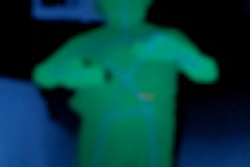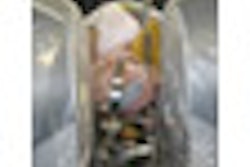3D image guidance can successfully be used to place thoracolumbar pedicle screws, yielding fewer misplaced screws and avoiding radiation exposure from fluoroscopy, according to an article published online in the Journal of Neurosurgery: Spine.
"As technology continues to advance, 3D spinal image guidance is becoming more user-friendly to the surgeon," wrote a research team led by Dr. Eric Nottmeier of the Mayo Clinic in Jacksonville, FL. "Advantages of this technology in our practice include safe and accurate placement of spinal instrumentation with little to no radiation exposure to the surgeon and operating room staff."
The team reviewed the charts of 220 consecutive patients undergoing posterior spinal fusion using 3D image guidance for instrumentation placement. Of the 220 patients, 1,084 thoracolumbar pedicle screws were placed using either the VectorVision (BrainLab, Munich, Germany) or StealthStation Treon (Medtronic Navigation, Louisville, CO) image-guided surgery system (JNS, December 9, 2008).
In 184 patients, postoperative CT scanning was performed, allowing for 951 screws to be graded by an independent radiologist for bone breach. All complications from the instrumentation placement were noted, according to the researchers.
The study team found no vascular or visceral complications from the screw placement. Two nerve root injuries occurred in the 1,084 screws placed, for a 0.2% per-screw incidence and a 0.9% patient incidence of nerve root injury. Neither root injury was associated with a motor deficit, according to the authors. The breach rate was 7.5%, with grade 1 and minor anterolateral "tip out" breaches accounting for 90% of the total breaches.
Revision surgery patients contributed 46% of patients in this study, which allowed for 154 screws placed through previous fusion mass to be evaluated using postoperative CT scanning, the study team stated. In these patients, the breach rate was 7.8%.
The study included a total of 765 pedicle screws placed into the L3-S1 levels. Of these, 546 (71%) were 7.5 mm or greater in diameter. The researchers found no statistical difference in breach rate for screws placed through revision spinal levels compared with nonrevision spinal levels (p = 0.499). In addition, the study team did not find an increase in breach rate with placement of 7.5-mm-diameter screws.
"The complication and breach rates in our study were low, particularly given the large percentage of revision surgery cases in this series," the authors wrote. "Additionally, large diameter screws could be placed with high frequency in the lower lumbosacral spine."
By Erik L. Ridley
AuntMinnie.com staff writer
December 29, 2008
Related Reading
Elderly do well when undergoing image-guided biopsy procedures, December 8, 2008
New solutions speed convergence of imaging and surgery, November 5, 2007
Advanced liver imaging shapes surgical strategies, September 18, 2007
CARS suite of the future sees key role for image-guided intervention, June 23, 2005
Copyright © 2008 AuntMinnie.com



















